Accepted Scientific Name: Copiapoa echinoides (Lem.) Britton ex Rose in Britton & Rose
Cactaceae (Britton & Rose) 3: 88, fig. 100. 1922 Britton & Rose

Copiapoa dura Photo by: Valentino Vallicelli
KK607 Totoral, Chile 200-300m. Very nice small growing plants with dark purplish-brown stem and thick curved amber-maroon /black spines. Really magnificent!!!
Origin and Habitat: Northern Chile (Near Totoral, Atacama)
Synonyms:
See all synonyms of Copiapoa echinoides
back
Accepted name in llifle Database:Copiapoa echinoides (Lem.) Britton ex Rose in Britton & RoseCactaceae (Britton & Rose) 3: 88, fig. 100. 1922Synonymy: 14
back
Common Names include:
SPANISH (Español): Duro
Description: Copiapoa duraSN|1109]]SN|14234]] is a local or morphological form of the widespread and variable Copiapoa echinoidesSN|14234]]SN|1109]]. It has a dark purplish-brown stem and very thick curved amber-maroon to black spines. However the distinguishing characteristics of Copiapoa duraSN|1109]]SN|14234]], appear to fall within the natural variation of Copiapoa echinoidesSN|14234]]SN|1109]] and it should be synonymized with the latter.
Habit: Solitary, or forming dense clumps.
Stem: Spherical, firm, dark tannish-green to very dark-purple and woolly apically, 12 to 20 cm tall, 18 cm in diameter.
Ribs: 11 to 17 , truncated.
Roots: Fibrous.
Areoles: Yellowish, becoming grey with age.
Spines: Maroon-reddish to pure black, straight or (usually) somewhat curved upward.
Central spines: 0 to 3, 1 to 3(-5) cm long.
Radial spines: 5 to 10, 2.5 cm long.
Flowers: Scented, pale yellow, 4 cm in diameter.
Fruit: Brownish-red, round with a few scales 2.5 cm long.
Seeds: Black.
Subspecies, varieties, forms and cultivars of plants belonging to the Copiapoa echinoides group
 Copiapoa bridgesii (Pfeiff.) Backeb.: has very spiny, cylindrical stems. Its relationship with Copiapoa echinoides is unclear. It is probably a good species rather than a variety of C. echinoides. Distribution: North of Chanaral, Atacama, Chile.
Copiapoa bridgesii (Pfeiff.) Backeb.: has very spiny, cylindrical stems. Its relationship with Copiapoa echinoides is unclear. It is probably a good species rather than a variety of C. echinoides. Distribution: North of Chanaral, Atacama, Chile. Copiapoa cupreata (Poselg. ex Rümpler) Backeb.
Copiapoa cupreata (Poselg. ex Rümpler) Backeb. Copiapoa dura F.Ritter: Solitary, or forming dense clumps. The stem is firm, dark tannish-green to very dark-purple and woolly apically. The spines are very strong maroon-reddish to pure black, straight or (usually) somewhat curved upward.
Copiapoa dura F.Ritter: Solitary, or forming dense clumps. The stem is firm, dark tannish-green to very dark-purple and woolly apically. The spines are very strong maroon-reddish to pure black, straight or (usually) somewhat curved upward. Copiapoa echinoides (Lem.) Britton ex Rose in Britton & Rose: small growing plant with dark purplish-brown stem and thick curved amber-maroon to black spines. This appears to be a very variable species.
Copiapoa echinoides (Lem.) Britton ex Rose in Britton & Rose: small growing plant with dark purplish-brown stem and thick curved amber-maroon to black spines. This appears to be a very variable species. Copiapoa echinoides var. cuprea (F.Ritter) A.E.Hoffm.: Stems dull green to dark coppery-brown and woolly apically spines, stout bwown to black, straight to somewhat curved upward.
Copiapoa echinoides var. cuprea (F.Ritter) A.E.Hoffm.: Stems dull green to dark coppery-brown and woolly apically spines, stout bwown to black, straight to somewhat curved upward. Copiapoa griseoviolacea I.Schaub & Keim: has a dark farinose violet-grey epidermis and a dense spine covering. Distribution: south of the Huasco river.
Copiapoa griseoviolacea I.Schaub & Keim: has a dark farinose violet-grey epidermis and a dense spine covering. Distribution: south of the Huasco river.
Notes: This appears to be a very variable species.
Bibliography: Major references and further lectures
1) Faundez, L., Walter, H.E., Guerrero, P., Saldivia, P. & Avilés, R. 2013. Copiapoa echinoides. The IUCN Red List of Threatened Species. Version 2014.3. <www.iucnredlist.org>. Downloaded on 08 May 2015.
2) F. Ritter “Kakteen in Sudamerika” Volume 3. 1980
3) A. Hoffmann, H. Walter “Cactáceas en la flora Silvestre de Chile” Ediciones Fundacion Claudio Gay, Santiago, Chile. Second Edition. 2004
4) Charles “Copiapoa. The Cactus file Handbook 4” Cirio Publ. 1998
5) Edward Anderson “The Cactus family” Timber Press, Incorporated, 2001
6) James Cullen, Sabina G. Knees, H. Suzanne Cubey “The European Garden Flora Flowering Plants: A Manual for the Identification of Plants Cultivated in Europe, Both Out-of-Doors and Under Glass” Cambridge University Press, 11/Aug/2011
7) David R Hunt; Nigel P Taylor; Graham Charles; International Cactaceae Systematics Group. "The New Cactus Lexicon" dh books, 2006
8) Wikipedia contributors. "Copiapoa echinoides." Wikipedia, The Free Encyclopedia. Wikipedia, The Free Encyclopedia, 18 Nov. 2014. Web. 8 May. 2015.
9) Urs Eggli, Leonard E. Newton “Etymological Dictionary of Succulent Plant Names.” Birkhäuser 2004
10) N. L. Britton, J. N. Rose “The Cactaceae. Descriptions and Illustrations of Plants of the Cactus Family.” Volume III, The Carnegie Institution of Washington, Washington 1922
11) Michail Belov. "Encyclopedia of the Chilean Flora: Copiapoa echinoides" http://www.chileflora.com Web. 8 May. 2015.
 Copiapoa dura Photo by: Valentino Vallicelli
Copiapoa dura Photo by: Valentino Vallicelli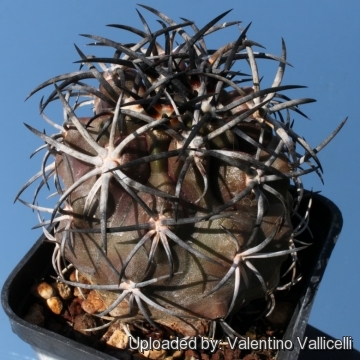 Copiapoa dura Photo by: Valentino Vallicelli
Copiapoa dura Photo by: Valentino Vallicelli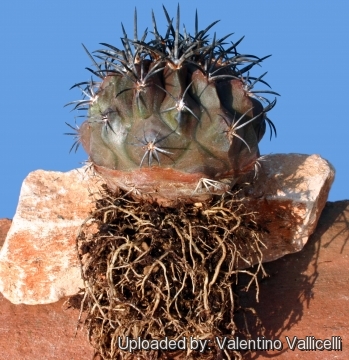 Copiapoa dura Photo by: Valentino Vallicelli
Copiapoa dura Photo by: Valentino Vallicelli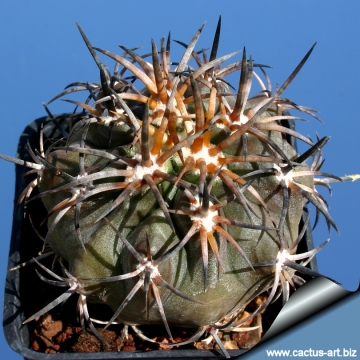 Copiapoa dura Photo by: Cactus Art
Copiapoa dura Photo by: Cactus Art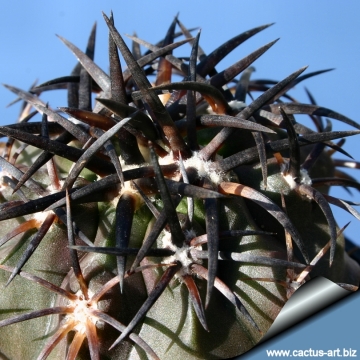 Copiapoa dura Photo by: Cactus Art
Copiapoa dura Photo by: Cactus Art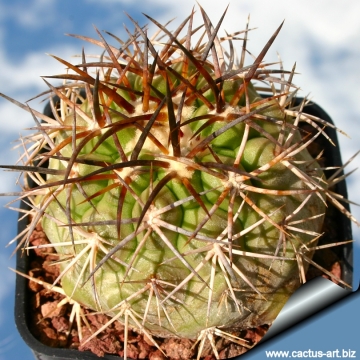 Copiapoa dura Photo by: Cactus Art
Copiapoa dura Photo by: Cactus Art Copiapoa dura Photo by: Cactus Art
Copiapoa dura Photo by: Cactus Art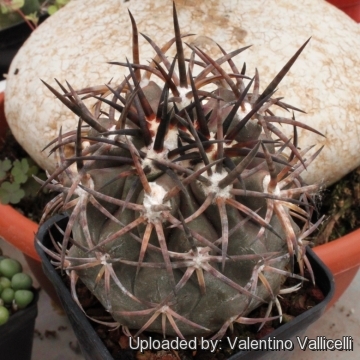 Copiapoa dura Photo by: Valentino Vallicelli
Copiapoa dura Photo by: Valentino VallicelliCultivation and Propagation: The location has to be warm and bright, and it has to be in direct sun. Otherwise the bodies tend to elongate in cultivation, but they should be protected from excessive heat and sun in summer. In the spring and late summer, water moderately. Between these times there are dry rest periods. In the winter keep the plant absolutely dry. The roots need a lot of room, so make sure that the pot is large enough. Use regular cacti soil with very good drainage.
Propagation: Seeds (offsets rarely), Grafting is often used to speed growth rate of seedlings and to create a back-up to plants in collection.
Your Photos

by Cactus Art




















